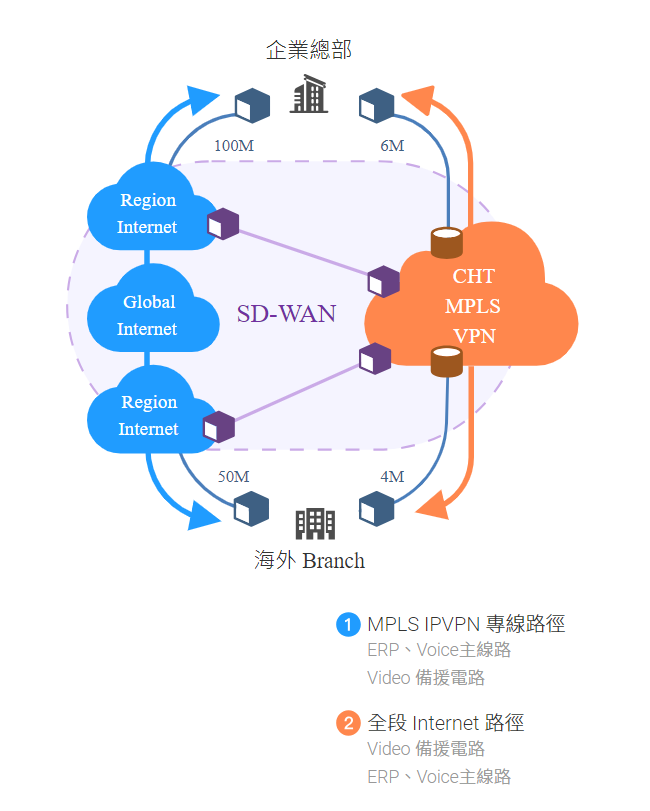◆Headquatered in Taiwan.
◆5 overseas locations, including 3 in Asia-Pacific, 2 in America and Europe respectively.
◆All bases have MPLS IPVPN and broad-band Internet
◆Headquarter: MPLS IPVPN 30Mbps / Internet 100Mbps
◆Asia-Pacific locations: MPLS IPVPN 10Mbps / Internet 50Mbps
◆U.S. and European bases: MPLS IPVPN 5M / Internet 20Mbps

◆The customer's headquarters is in Taiwan. There are 2 bases overseas, each having Internet and MPLS IPVPN services, with a large gap in the bandwidth between MPLS IPVPN and Internet
◆Using small-bandwidth, important applications mainly over the MPLS IPVPN route: ERP, voice
◆Using large-bandwidth applications (such as video conferencing, file transmission) mainly over the Internet IPSec route

◆The customer's headquarters is in Taiwan. There are 2 bases overseas, each having Internet and MPLS IPVPN services, with a large gap in the bandwidth between MPLS IPVPN and Internet
◆Using small-bandwidth, important applications mainly over the MPLS IPVPN route: ERP, voice
◆Using large-bandwidth applications (such as video conferencing, file transmission) mainly over the Internet IPSec route

















